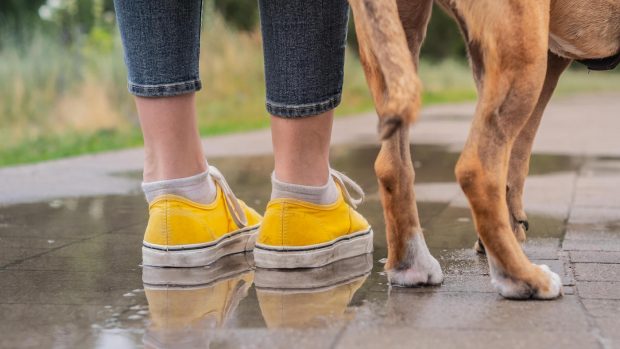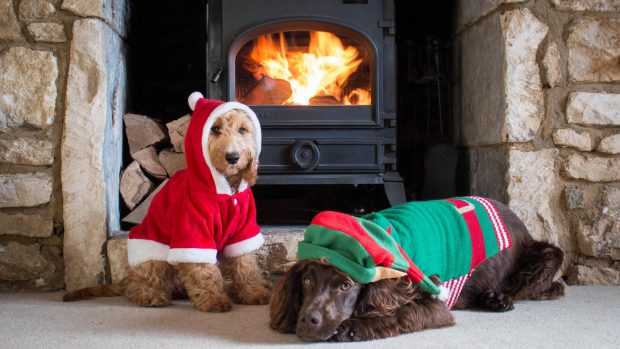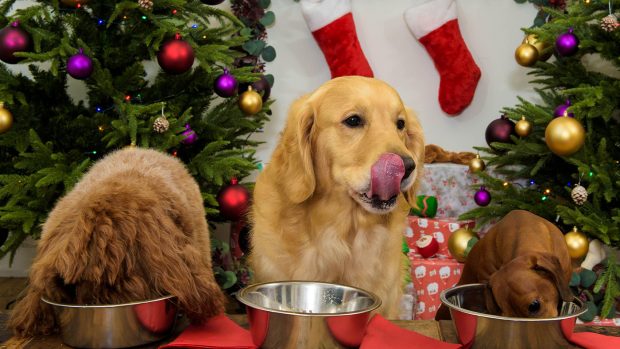Why do dogs pee in the house?
Before finding out how to stop a dog peeing in the house, you need know why they’re doing it. There are several possible reasons, including:
- territory marking – this is the most common
- submissive behaviour – this is usually a fear response
- over-excited – this is common in puppies (particularly females), but usually corrects itself with age
Submissive and excited incontinence are different to territory marking in that they have no control over it.
Medical issues
It’s important to also be aware of medical issues. If your dog has an onset of house soiling, rule out health problems, such as an infection or bladder stones, as a priority. Dogs that drink a lot can then need to pee a lot more, and drinking excessively can be a signs of Cushing’s disease, diabetes or kidney disease. An older arthritic dog may also begin to become increasingly incontinent. Brain disease can lead to dogs peeing in the home and in no particular pattern.
Another reason to take into account is whether or not your dog was properly house trained. It’s not uncommon for young dogs to relapse, and some dogs (even older ones) will try to avoid peeing outside if it’s raining! So before rectifying the behaviour it is important to ascertain that it is not a medical problem.
Male vs female
Male dogs are much more likely to mark their territory than females, particularly if there is another dog that comes to their house, or they visit another house where dogs are in residence. This is a marking behaviour and is often driven by hormones, but it can still occur even when neutered. This then, although marking, is more of an insecurity issue as they feel the need to make their presence known and an area to keep other dogs away from. This does not always work given that if there is another male dog in the home that is visiting or being visited, it’s most likely to pee over it, just to add insult to injury.
Males can cock their leg to specifically mark an area, although there are some bitches that lift a leg to do it, too, but not with the same accuracy or trajectory. A male is more likely to urine mark on corners or vertical surfaces. A female dog is more likely to mark if there’s anxiety or change in the household and daily routine. The presence of another unneutered female can sometimes cause a bitch to mark (usually on a bed) or even bring another bitch in her household into heat. A pregnant bitch may also become incontinent due to the pressure on her bladder towards the end of her pregnancy. A bitch in season can have the odd mistake, too, but that is usually more likely to be defecating as opposed to urinating.
How to stop a dog peeing in the house
Marking
If you catch your dog at it, you can clap, make a loud noise or growl “no” at them, and then quickly take them outside. You can correct the marking behaviour as it has nothing to do with toilet training or your dog not being able to hold their pee. This is why they do it in the same place each time.
It’s then really important that you clean the area with an enzymatic cleaner (like this one on Amazon) as this eliminates the scent so that your dog is less likely to return to top up the marking.
If your dog is left unsupervised or you’re going out, it’s advisable to restrict their access or crate train them.
Submissive and excited peeing
It’s difficult to prevent this because your dog doesn’t have control over the behaviour. Even if you’re very calm, get down to a dog’s level and give no eye contact, they can still pee. In some instances, dog knickers (like these on Amazon) or the incontinence bands for male dogs (like these on Amazon) can be really helpful. Puppies usually grow out of this behaviour by a year old, but if they don’t it’s advisable to seek help from a behaviourist.

Doggie Diapers | Amazon.co.uk
This washable and reusable incontinence nappies are available in five sizes and a wide range of prints. Suitable for females.

Mkouo Belly Bands | Amazon.co.uk
These reusable and washable belly bands are available in three sizes and are suitable for male dogs.
How to clean dog pee in the house
The main thing to concentrate on after the event is scent elimination. Believe it or not, disinfectants do not actually eliminate the odour. I find white vinegar to be the best, as it is highly acidic, followed by baking soda and soap. However, if you have deep stains and smells you need a good enzyme based cleaner, which will break down all the poo, pee, vomit and stains left behind. This is also the best thing to use if you need to get dog pee out of the carpet.

Simple Solution Dog Stain & Odour Remover | Amazon.co.uk
Use this to eliminate and neutralise tough pet stains and odours, including urine, faeces, and vomit. It breaks down the odour-causing bacteria and prevents repeat marking, too.
How to spot if a dog is going to mark in the house
There are two common ways to tell if your dog may be about to pee in the house – they might start sniffing around or sneaking off.
If you see a lot of circling or sniffing in various places, especially around thresholds and where other dogs sleep and reside, this is a strong sign. Even if there are no other dogs in your home or house that you’re visiting, they can still mark new territory and their own territory if they feel threatened by noises going on outside, such as workmen in the house, a new baby or other pet.
The other thing dogs do is sneak off. They also do this if, for instance, they are not allowed upstairs – then if they manage to get upstairs they pee. Often a dog will pee on children’s beds or in their rooms. This can be a hierarchy behaviour if they see children as litter siblings and wish to be above them in the ranking.
You may also enjoy reading…

These are the Amazon Prime Day dog deals 2024 we’d buy ourselves

No stains, no smells: how to get dog pee out of carpets

How to house train with puppy pads, according to an expert dog trainer

11 hacks to eliminate bad doggy smells

Subscribe to Horse & Hound magazine today – and enjoy unlimited website access all year round
Horse & Hound magazine, out every Thursday, is packed with all the latest news and reports, as well as interviews, specials, nostalgia, vet and training advice. Find how you can enjoy the magazine delivered to your door every week, plus options to upgrade your subscription to access our online service that brings you breaking news and reports as well as other benefits.






